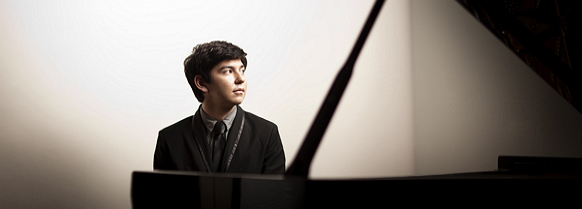Tag: Danse macabre
-

PROGRAM NOTES: YEVGENY SUDBIN
Domenico Scarlatti Sonata in B minor K 197 Sonata in G major K 455 “Probably one of the most outrageously individual compositional outputs of the Baroque era is to be found in the keyboard sonatas of Domenico Scarlatti,” writes Yevgeny Sudbin in the liner notes to his 2004 Scarlatti album. This may explain why Scarlatti’s…
-

PROGRAM NOTES: BEHZOD ABDURAIMOV
Ludwig van Beethoven: Sonata in A flat, Op. 26 Beethoven begins to move away from the norms of the classical tradition in this unconventional four-movement sonata without a single movement in traditional sonata- allegro form. It opens with a noble, almost ceremonial theme with five variations, all based, to some degree, on the principle of rhythmic…

